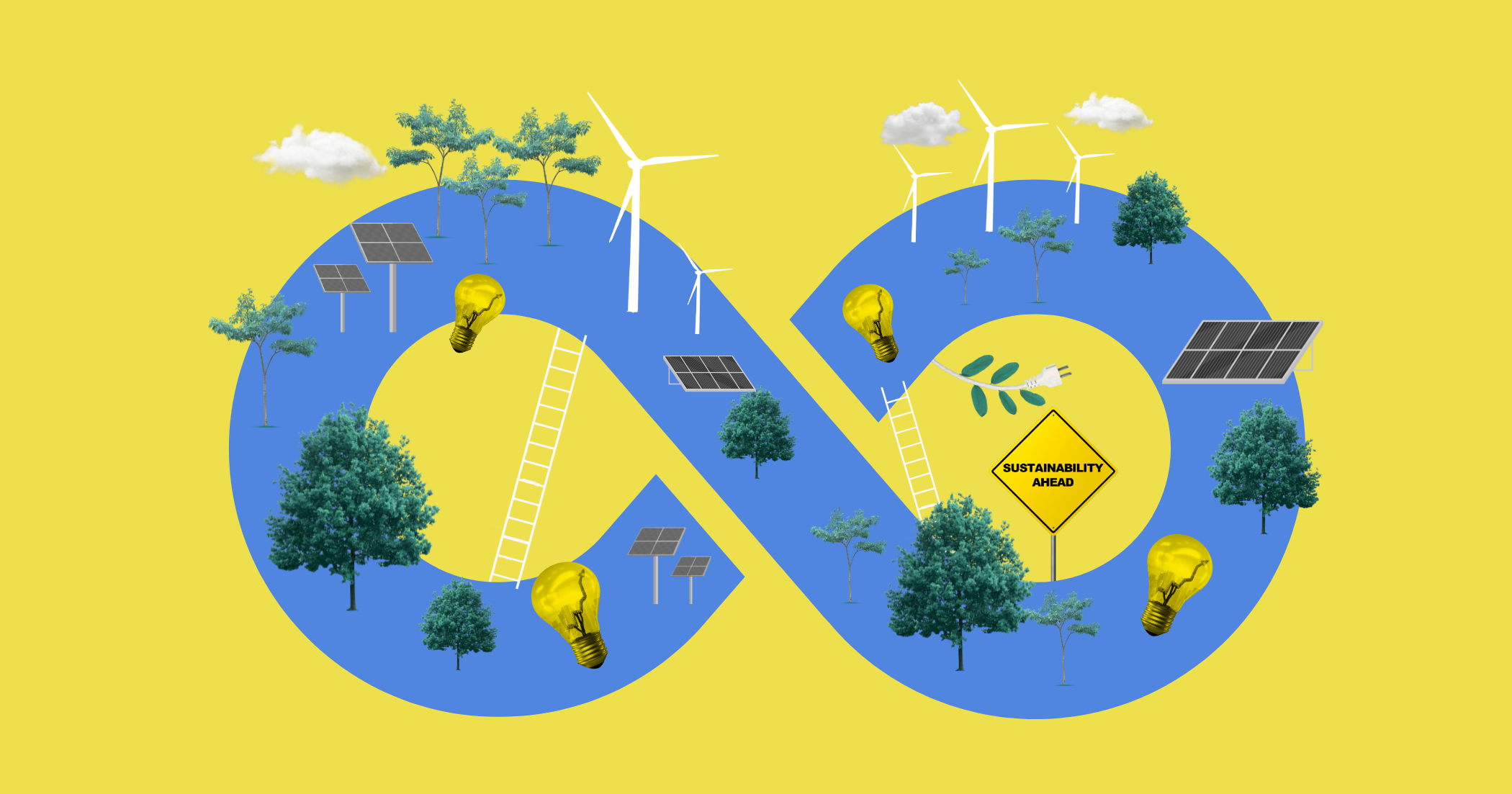.png)
Kogod School of Business
In the early 2000s, the notion of a business finding ways to be more sustainable wasn’t exactly seen as a boon for the bottom line.
Companies have had to contend with environmental regulations for decades, and finding ways to recycle materials and reduce waste is hardly a new concept.
What is clearer today, though, is that the most innovative companies—and those poised for financial success in the decades to come—don’t view environmental, social, and governance (ESG) factors as mere virtue, or a “necessary evil” to do right or follow the law.
Executives who implement these sustainable business practices—from internal operations to commercial products—have unique opportunities to win customers, boost profits, and cut costs.
Case in point: a joint study from McKinsey and NielsonIQ found that 60 percent of consumers reported they’d be willing to spend more for a product with sustainable packaging. That’s a statistic that might have been hard to imagine two decades ago.
Another, from digital product testing platform First Insight, found that 62 percent of Gen Z shoppers prefer to buy from brands that prioritize sustainability, in a finding that underscores the opportunity businesses have as that generation’s financial sway increases.
Together, these trends have fueled stronger pressures to implement ESG strategies—pressures that have spread from the chief sustainability officer’s suite to the CFO’s corner office, the board of directors, and shareholders.
In 2025, adopting ESG strategies can help a company’s bottom line by helping it develop the right products for its target customer, reduce waste (and cost in the process), and make more efficient use of its resources.
Here’s a look at three big-picture strategies to focus on:
1. Developing the right products
Compared with even a decade or two ago, today’s consumer has shown a willingness to pay extra for products that carry a true, tangible, sustainable benefit.
It could be an extra $100 in rent per month on a building that’s LEED-certified or an extra $4 for a pound of meat sourced from a local supplier that shortens the supply chain (from farm … to the kitchen table, one might say).
Certainly, financial incentives that proliferated under the Biden administration helped sweeten the deal for customers, such as the tax credits for clean energy home appliances or electric vehicles passed as part of the 2022 Inflation Reduction Act.
But even as policies at the state and federal levels ebb and flow, there’s clear durability in consumers’ willingness to pay a bit more for a product that was produced the right way—and the planet-friendly way.
And plenty of customers won’t purchase products that aren’t.
So, for companies, there’s an opportunity in offering bona fide sustainable products, and a real opportunity cost in not having it.
2. Waste reduction
Businesses should also focus on reducing waste by establishing a circular economy approach.
That includes revamping product lineups to produce goods that can last longer, that can be reused, or replaced with modular parts.
On one hand, this helps reduce waste, which offers a true sustainability benefit, reducing a company’s environmental footprint.
On the other hand, it raises concerns about whether customers are as likely to be repeat buyers after purchasing products they won’t need to replace as often.
But, implemented effectively, these tactics can also be a tailwind, significantly lowering a company’s manufacturing costs.
Plus, implementing a circular economy can reduce reliance on external supply chains, which can be a particularly appealing move amid the global supply chain volatility we’ve seen in recent years.
3. Resource efficiency
Finally, companies should systematically reduce their consumption of energy, water, and other raw materials used throughout their production process.
Certainly, this has roots in reducing waste and environmental footprint.
But refocusing on streamlining resource usage ultimately is good for business: at its core, it’s about running a more cost-disciplined operation that’s vital to any business’s success.
Behind the thinking on these three, overarching strategies is Kogod professor and director of the MS in Sustainability Management program, Julie Anderson.
Whether business leaders personally believe in climate change is irrelevant. What matters is that 90 percent of the global market does, making it a megatrend that will determine which companies thrive and which become obsolete in the decades ahead."

Julie Anderson
MS in Sustainability Management Program Director, Kogod School of Business
Anderson, who doubles as a distinguished business strategist and specialist in ESG and sustainability, focuses her courses on preparing students for careers at the intersection of business and sustainability.
Successfully implementing ESG strategies into a business’s larger approach, she said, hinges on fostering alignment across three critical constituencies: the business leader, the scientist or environmentalist, and the policymaker.
Learning how to bridge that gap and work with all three groups is a central focus in Kogod’s Master’s in Sustainability Management Program.
The program, one of few of its kind housed inside a business school, empowers students to manage around climate change, learn business strategy, and report sustainability metrics.
The program offers three career tracks: business, environment, and policy.
Students learn both in the classroom and through experiential consulting projects with real-world clients in the US and internationally, gaining hands-on experience managing costs and implementing sustainability elements.
It all comes back to the theme, Anderson notes, that ESG can be far more than a hurdle for the company’s cost center, but a way to transform how it does business, improve operational efficiencies, and reward shareholders.
